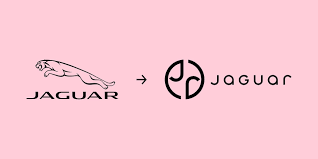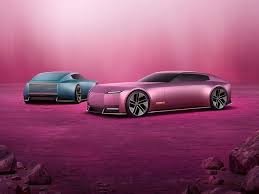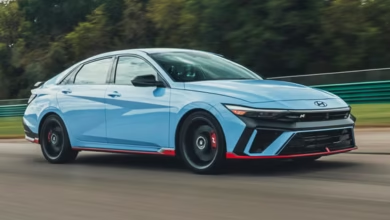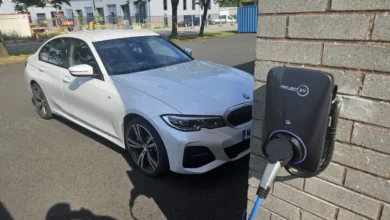Jaguar Rebrand: A Bold Leap Into the Future of Luxury and Electric Innovation

Rebrand When a heritage brand like Jaguar announces a rebrand, the automotive world listens—and rightly so. With a legacy stretching back to the 1930s, Jaguar has always been known for its seductive designs, high-performance machines, and British luxury charm. But in an era dominated by electric vehicles (EVs), sustainability, and rapidly evolving consumer expectations, even icons must evolve.
The rebranding of Jaguar is not just a matter of logos and slogans—it’s a complete repositioning of the brand’s identity and its place in the global luxury automotive market. It’s an ambitious attempt to stay relevant in a future that is moving fast, and it reflects a deeper shift in the industry at large.
Jaguar’s transformation isn’t merely cosmetic—it’s philosophical. It’s about modern luxury, electrification, and making sure the brand doesn’t get left behind as Tesla, Lucid, and others redefine what premium mobility means. So, let’s dive into what this rebrand really means for Jaguar, its customers, and the car world at large.
The History Behind the Badge: From Big Cats to British Icons

Jaguar didn’t start off as Jaguar. Originally founded as the Swallow Sidecar Company in 1922, the brand became “Jaguar” in 1945. Since then, it’s been a symbol of British motoring elegance, crafting legends like the E-Type, XJ, and more recently the F-Type. But history, no matter how glorious, can also weigh a brand down.
Over the decades, Jaguar has faced its fair share of challenges—ownership changes, market shifts, and competition that only grew tougher. Though the cars retained their mystique, sales didn’t always reflect that. The 2000s saw an effort to modernize, especially after being acquired by Tata Motors, but consistency remained elusive.
Now, in 2025, Jaguar is embracing its past in a new light. The goal is not to erase what came before, but to build on it with relevance and innovation. The new rebrand promises to honor that storied heritage while firmly stepping into a clean, electric, and minimalistic future.
What the Jaguar Rebrand Looks Like: Simplicity Meets Sophistication
Let’s talk aesthetics. Jaguar’s new brand identity is sleek, refined, and purposefully minimal. Gone is the aggressive, chrome-heavy big cat. Instead, the new visual language is more abstract and confident—less about literal representation, more about emotional appeal.
The typography has been modernized—think cleaner lines, sans-serif fonts, and a layout that’s more digital-friendly. The color palette has been toned down, leaning into monochromes and muted metallics, perfectly aligned with the luxury EV aesthetic that dominates today’s premium market.
But beyond logos and fonts, Jaguar is signaling a lifestyle shift. This isn’t just about what you drive—it’s about what you stand for. The brand’s new slogan (rumored to be “Fearlessly Forward”) emphasizes boldness and innovation, positioning Jaguar not just as a carmaker, but as a curator of future-forward luxury experiences.
Electric Is the Future: Jaguar Goes All-In on EVs
One of the biggest moves in the rebrand is Jaguar’s total pivot to electric vehicles. This isn’t just a vague promise or a timeline buried in fine print—Jaguar plans to go fully electric by 2025. That’s one of the most aggressive transitions in the luxury auto world.
Their current EV offering, the I-PACE, was ahead of its time when it launched, but the new generation of Jaguar EVs will go far beyond that. Designed on a brand-new bespoke electric architecture, these cars promise not only zero emissions but also maximum luxury and tech integration.
Why is this such a big deal? Because the luxury market isn’t just about horsepower anymore. It’s about software, user experience, environmental responsibility, and design sophistication. Jaguar understands that to compete with Tesla, BMW i-series, Mercedes EQ, and even newcomers like Polestar, they need to lead—not follow.
The rebrand allows Jaguar to shed its old skin and start fresh with electric vehicles that aren’t just Jaguars in name, but in ethos. Expect longer ranges, cutting-edge infotainment systems, and a silent but powerful ride experience that redefines what British luxury means in a carbon-neutral world.
Target Audience Reimagined: From Classic Enthusiasts to New-Gen Minimalists
Historically, Jaguar attracted a certain demographic—think successful professionals, older clientele, and car collectors with a taste for nostalgia. The rebrand shifts that focus. Now, Jaguar is targeting younger, urban consumers who value sustainability, design, and connected technology just as much as (if not more than) performance.
That doesn’t mean they’re alienating longtime fans. In fact, the rebrand has been handled delicately to ensure that the core Jaguar DNA—elegance, performance, and sophistication—remains intact. But it’s being translated into a new language. One that appeals to people who might’ve previously leaned toward Tesla or Porsche Taycan.
There’s a clear effort to tap into the premium lifestyle space too. Jaguar is leaning into fashion partnerships, design collaborations, and digital experiences to position itself as more than a car brand. It’s not just about the vehicle anymore—it’s about the entire ownership ecosystem, from app interfaces to charging networks to exclusive owner events.
Challenges Ahead: Can Jaguar Truly Reinvent Itself?
Rebranding is never easy, especially for a legacy brand. Jaguar’s challenge lies in shedding past perceptions while building trust for the future. Some consumers still associate the brand with unreliable electronics or dated interiors from earlier models. The rebrand needs to not only visually reset the brand but also fundamentally change the experience Jaguar delivers.
The transition to EVs also poses logistical hurdles. Building a new EV platform, creating supply chain partnerships for batteries, and competing in an increasingly crowded electric market isn’t a walk in the park. Jaguar will need to deliver exceptional quality and user experience to stand out.
And let’s not forget the emotional challenge. A rebrand of this magnitude risks alienating purists. Jaguar fans love the growl of the V8, the beauty of old-school dashboards, and the visceral connection to classic cars. Jaguar must find a way to bring those emotional elements into an EV world—perhaps through soundscapes, tactile materials, or AI-enhanced driving profiles.
Final Thoughts: A Risk Worth Taking
Jaguar’s rebrand is gutsy, no doubt about it. But it’s also necessary. The automotive world is changing rapidly, and brands that don’t evolve risk being forgotten. By embracing electrification, modern design, and a broader lifestyle positioning, Jaguar is attempting to lead rather than follow.
Will it work? That remains to be seen. But one thing’s for sure: Jaguar is no longer trying to be a slightly different version of BMW or Mercedes. It’s carving its own path—sleek, silent, and electric. And if they play their cards right, the rebrand could go down in history as one of the smartest pivots in automotive history.
So next time you hear the name “Jaguar,” don’t just think of leaping cats and vintage roadsters. Think of innovation. Think of electric luxury. Think of a brand reborn for a new generation.



